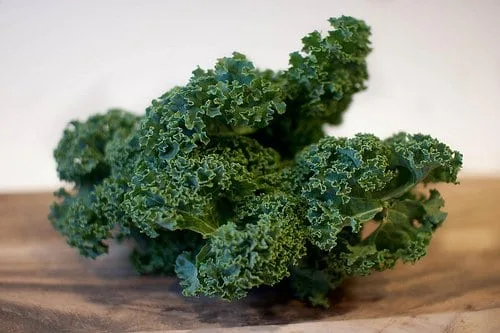Kale has become the darling of the health food world, and for good reason. These greens in the cruciferous family pack a lot of vitamins, minerals and antioxidants into a small package. Of course, it’s easy to get carried away at the market, and find yourself with more than a week’s supply on hand. Can kale go bad, and how should you store all those greens so they stay fresh?
Can Kale Go Bad?
Like all fresh vegetables, kale can go bad. When properly stored, this leafy green can last for up to two weeks in the refrigerator. Of course, the time spent from the farm to the supermarket needs to be taken into account. So, kale that was bought from your local farmer’s market will likely last longer than the bag purchased from the supermarket.
How to Tell If Kale Has Gone Bad
As kale ages, it will begin to lose moisture and wilt. The leaves will change from a rich dark color, to a pale greenish yellow, and eventually turn brown. After too long, the wilted leaves will become soggy and liquid will leak out.
(The same happens to spoiled spinach.)
Smell is another indicator of spoilage. Fresh kale should have an earthy, “green” smell. As the kale ages, it will begin to take on an almost sulfurous smell, like rotten eggs. An off smell indicates that the kale has spoiled, and should not be consumed.

How to Store Kale
Kale should be stored in the refrigerator, and kept in a plastic tub or bag. Since kale needs to breathe, it’s best if the bag or tub does not seal completely, but allows for some air flow. You can wait to wash kale until you decide to cook it, but if you want to wash and store your veggies all at once to save time on meal prep throughout the week, just be sure to thoroughly dry kale before putting it back in the fridge. Excess moisture will cause kale to spoil faster.
To extend the shelf life of kale by a bit more, roll out a three to four foot piece of paper towel and spread the washed and dried kale leaves on top in a single layer. Now, just roll the paper towel up with the leaves inside, and store in a plastic bag in the refrigerator. Be sure to keep the kale away from the back of the fridge, where temperatures are often much lower, and the kale could freeze.
Can You Freeze Kale?
Kale can be frozen for long term storage. To freeze kale, wash it thoroughly and pat dry with a paper towel. You can either remove the stems, or leave them intact. While the stems are a bit hard and woody, once they are frozen and thawed, they will soften. Chop kale into about 1” pieces. The chopped kale can be frozen on a baking sheet in a single layer, and then transferred to a tightly sealed container. Frozen kale can keep in the freezer for up to a year.
Frozen kale can be used in stir fries, and other dishes that call for cooked kale. Once kale thaws out, it will have a different texture than fresh kale, and so previously frozen kale shouldn’t be used in salads. You can cook frozen kale immediately, without thawing.
Another method for preserving a large amount of kale is canning. Because of the low acidity, the jars will have to be processed in a pressure canner. You can use a brining solution, or even make pickled kale, which would have a high enough acidity to simply can with a water bath. Be sure to follow the directions for your canner carefully, to ensure the safety of your canned kale. Properly canned kale will have a shelf life of about a year, and should be stored in a cool, dark place.